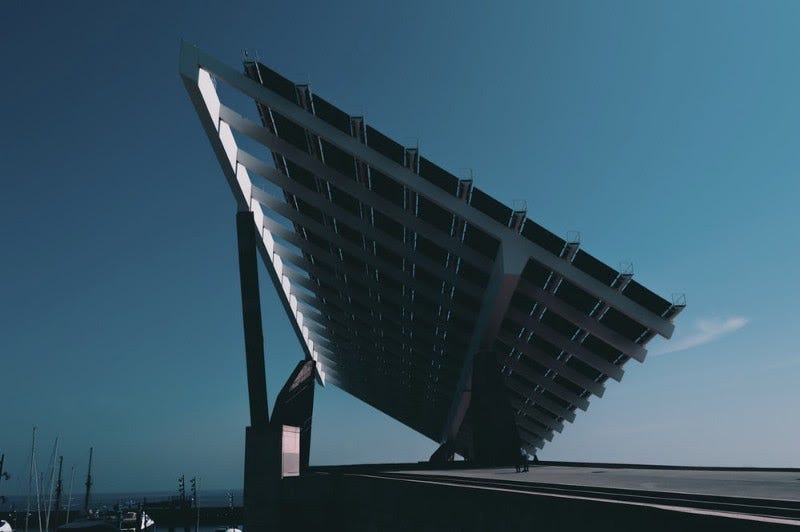China and CO2 in hindsight
With the benefit of 7-years of perspective
On 14 August 2018, I published an op-ed on how R&D spending on emissions technology (i.e. solar) is equally as important as real emissions reduction today. It reads like it was written by a 23-year-old who knows nothing… because it was.
7-years on, I have well and truly updated my priors.
Here is my original take:
China: An emissions rescuer or perpetrator?
China’s commitment to addressing the causes and effects of climate change span well beyond their fair share of responsibility and should be used as a model for other developed economies.
China is committed to peak the nations carbon dioxide emissions by 2030 at the latest, while reducing CO2 intensity by over 60% from a 2005 baseline. While these targets put China at the front of the pack for renewables and transitions targets, it is their role in research and development into PV solar panels that create positive externalities and technical adoption opportunities for economies.
While headlines have criticised China’s momentum in reaching agreements set out in Paris 2015, these focus on the emissions intensity within the country, failing to account for the positive benefit derived from other nations importing Chinese solar panels based off decades of engineering R&D within the Chinese mainland. China remains the largest producer, and consumer of solar panels in 2018. Both the supply side and demand side of this relationship go to extraordinary lengths in reaching Paris agreement goals, despite coal emissions rising in China in 2017.
While many developed economies, including Australia, were tinkering with energy mixes in the early 2000’s, China capitalised on its comparative advantage in cheap labour and manufacturing expertise to gain 60% of solar panel production market share by 2011. It appears the positive externality that China has created through the headstart in PV innovation was not appreciated worldwide however, with a 30% tariff imposed by the US in early 2018. Not only is this damaging for worldwide progress on emissions reductions, it does not align with the US’ long term interests of reducing emissions while dominating global trade.
The outcome of a prosperous future where emissions reduction targets are met by most advanced economies is still attainable, yet the likelihood declines year on year. China will retain its comparative advantage in PV manufacturing into the next decade due to strong domestic demand and export opportunities outside of the US.
A more realistic model of climate change adaptation responsibility should factor in emissions per capita minus investment in renewables per capita. Chinese climate negotiators and policy makers are perfectly poised to craft a better deal. China needs to push for a global emissions trading scheme or similar to account for the real work they are doing on behalf of other nations.
With the next conference of the parties (COP24) starting in December 2018, China deserves to have their efforts recognised and modelled by other economies this year. Modern economies that need peers to copy include South Africa, Australia, and the United States who have withdrawn from the Paris Agreement entirely.
While it is important to note that the inertia surrounding emissions reduction is multifaceted and largely not due to a lack of political will, it is equally important to keep striving for new solutions. The so called ‘trilemma’ of emissions reductions, affordable energy, and reliable supply can be achieved. However, this will require cooperation between advanced economies on an unprecedented level.
Now, with updated priors in 2025, I'd take a different view.
China continues to have an each way bet on climate action. Carbon emissions continue to rise year after year (+5% in 2023), and 2023 saw record-breaking coal consumption.
Although the Chinese government has stated targets to reduce energy intensity (by about 2% YoY), in 2023, energy consumption surged by ~6% outpacing the GDP growth rate of 5.1%. This means more coal was burnt to feed a hungry grid.
Chinese negotiators at COP27 and COP28 have also resisted stronger language around fossil fuel phase-out, positioning themselves more as defenders of the status quo than as visionaries.
China's aggressive subsidisation of its solar manufacturing sector—through low-interest loans, tax breaks, land grants, and direct state support has flooded international markets with ultra-low-cost solar panels, often priced below production costs. Manufacturing economics like the US and Germany aren’t silly. Their governments almost immediately placed import restrictions on Chinese made solar panels.
China dominates solar panel manufacturing (~75% of the world market) and process innovation, but much of the foundational and frontier R&D in solar technology still comes from other countries—especially the U.S., Germany, Japan, South Korea, and increasingly India.
My view: PV manufacturing innovation is necessary but not sufficient (and certainly not substitutable) for real emissions reduction today. China is certainly still an emissions perpetrator. Whether they will rescue themselves remains to be seen.


